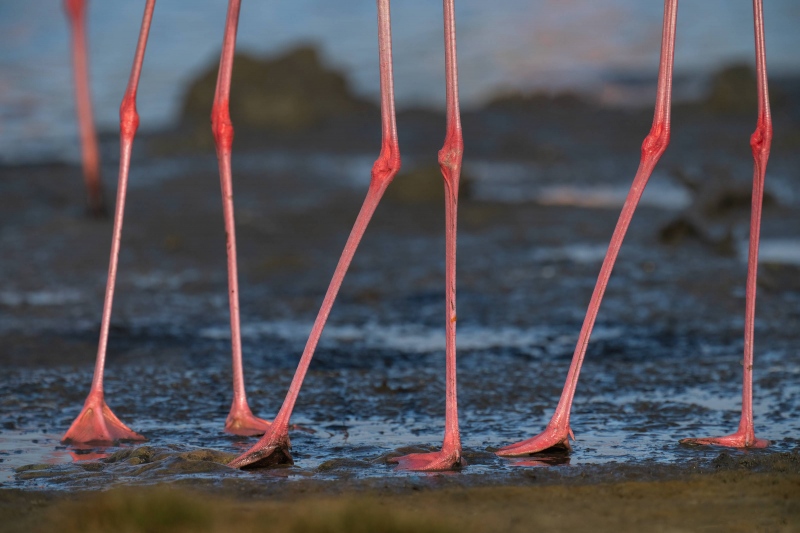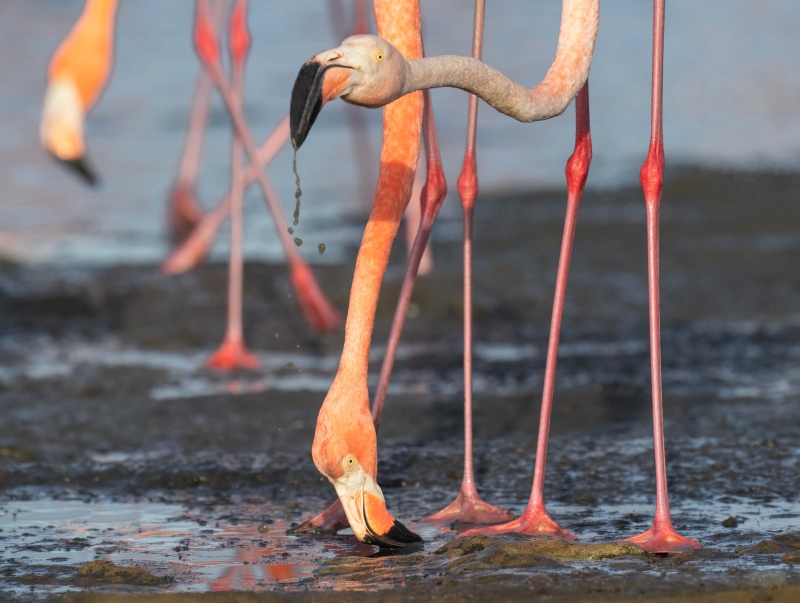What’s Up?
In the last blog post I agreed with all who commented: Image #1, the one made using the knee-pod technique was the strongest proving once again that lower is not always better.
Th incision is looking fine and dandy and the stitches will be removed tomorrow. I am anxious to get back out to Nickerson Beach.
Today is Sunday 4 June 2023. This blog post took about 90 minutes to prepare. I have gotten a ton of work done on the flight photography guide that I am writing with Arash Hazeghi and the end is in sight. Wherever you are and whatever you are doing, I hope that you too are gonna have a great day.
All are cordially invited to join me at Nickerson Beach this month, next year or on a Homer or a San Diego Instructional Photo Tour (IPT). I will be announcing fall dates for two or three Fort DeSoto IPTs soon. Not to mention a Galapagos Photo-Cruise of a Lifetime in August 2024.
Please remember to use the B&H and Amazon links that are found on most blog pages and to use the BIRDSASART discount code at checkout when purchasing your new gear from Bedfords to get 3% back on your credit card and enjoy free second-day air FedEx. Please, also, consider joining a BAA IPT. You will be amazed at how much you will learn!
You can find some great photo accessories (and necessities, like surf booties!) on Amazon by clicking on the Stuff tab on the orange/yellow menu bar above. On a related note, it would be extremely helpful if blog-folks who, like me, spend too much money on Amazon, would get in the habit of clicking on the Amazon logo link on the right side of each blog post when they shop online. As you might expect, doing so will not cost you a single penny, but would be appreciated tremendously by yours truly. And doing so works seamlessly with your Amazon Prime account.
Please remember that if an item — a Delkin flash card, or a tripod head — for example, that is available from B&H and/or Bedfords, is also available in the BAA Online Store, it would be great, and greatly appreciated, if you would opt to purchase from us. We will match any price. Please remember also to use my B&H affiliate links or to earn 3% cash back at Bedfords by using the BIRDSASART discount code at checkout for your major gear purchases. Doing either often earns you free guides and/or discounts. And always earns my great appreciation.
|
|
|
This image was created on 26 April 2023 on Bonaire. Standing at full height, I used the Robus RC-5558-3 Vantage Series 3 Carbon Fiber Tripod/Levered-Clamp FlexShooter Pro-mounted Sony FE 600mm f/4 GM OSS lens, the Sony FE 2.0x Teleconverter, and The One, the Sony Alpha 1 Mirrorless Digital Camera). The exposure was determined via Zebra technology with ISO on the thumb dial. ISO 1000. 1/1000 sec. at f/10 (stopped down 2/3-stop) in Manual mode. When evaluated in RawDigger, the raw file brightness was determined to be perfect. AWB at 7:20:55am on a mostly sunny morning. Tracking: Expand Spot/AF-C with Bird-Eye/Face Detection performed perfectly. Click on the image to enjoy the high-res version. Image #1: American Flamingo leg patterns |
Fascinated
Watching five to ten flamingoes feeding at the main mud hole every morning, I quickly became fascinated by the patterns formed by their long pink legs. Since I was going for head and neck portraits at 1200mm, I added 1/3 stop light to the exposure and went to work.
Should I have eliminated the seventh “extra” leg in the upper left corner? Why or why not?
Do you consider this image interesting and creative or a total waste of pixels? Why?
|
|
|
This image was also created on 26 April 2023 on Bonaire. Again, standing at full height, I used the Robus RC-5558-3 Vantage Series 3 Carbon Fiber Tripod/Levered-Clamp FlexShooter Pro-mounted Sony FE 600mm f/4 GM OSS lens, the Sony FE 2.0x Teleconverter, and The One, the Sony Alpha 1 Mirrorless Digital Camera). The exposure was determined via Zebra technology with ISO on the thumb dial. ISO 1000. 1/1600 sec. at f/9 (stopped down 1/3-stop) in Manual mode. When evaluated in RawDigger, the raw file brightness was determined to be perfect. AWB at 7:42:54am on a mostly sunny morning. Tracking: Expand Spot/AF-C with Bird-Eye/Face Detection performed perfectly. Click on the image to enjoy the high-res version. Image #2: American Flamingoes feeding |
Eye Replacement
As sharp focus was on the eye of the flamingo with its bill in the mud, the face of the bird above it, the one dripping muddy water, was not at all sharp. I made a Quick Mask of the sharp eye and usd the sharp eye to replace the eye of the bird that had been in front of the plane of focus. When viewing wildlife art, the first thing that most folks do is make eye contact with the subject or subjects. Since it is imperative to have sharp focus on the head of the closest bird, replacing the eye was vital to the success of this image. It took all of about 90 seconds. Or less.
How would this image have been improved had I (by luck), placed my tripod one inch to my left?
Do you consider this image interesting and creative or a total waste of pixels? Why?
Which of today two featured images is the strongest? Why did you make your choice? If you do not like either one, please let us know why.
The Robus RC-5558 Vantage Series 3 Carbon Fiber Tripods
For reasons that I do not understand, the prices of both the 3-leg section Robus RC-5558-3 Vantage Series 3 Carbon Fiber tripod and the 4-leg section Robus RC-5558 Vantage Series 3 Carbon Fiber tripod have been drastically reduced. They are available only from B&H and are currently priced at a ridiculously low $399.95, about 1/3 the price of a comparable Really Wrong Stuff (RWS) tripod. Right now, the 3-leg section version is my go-to tripod.
Typos
With all blog posts, feel free to e-mail or to leave a comment regarding any typos or errors.
















Well if you’d placed the tripod 1 inch to the left in image 2 the subject matter would have been centered, but I’m not sure that is the answer you are hoping for. A small crop could’ve accomplished the same thing. Interesting photos, but I would’ve taken out the odd leg in 1. For me it’s distracting.
Being that asymmetric is always better, I would leave the seventh leg. The eye recognizes symmetric objects. Moving the tripod would have eliminated the intersection of the flamingos head and leg. Not a big fan of the image overall, but that is subjective. I love spinach.
Artie
Could it have possible made you on better sun angle and i find the image both interesting and art because i look at the legs and the necks and think of the birds how tall how there bodies are as in the land of the giants. I like it
Always with love b
Good try, but nope.
Ask yourself this: what would happen to the position of the mud droplets if my tripod had by luck been one inch to my left???
with love, a
The mud would have had a cleaner bg on white and centered it more between the legs however it would have also changed the head angle slightly given the this moment the button was pressed.
Always with love b
Hi Artie. Ok I’ll bite.
Moving your tripod to the left possibly shifts the neck shadow on the leg so you see less of it but perhaps more importantly it may have separated the beak dripping mud from the angled leg in the background.
Good try, but no 🙂
a
Interesting and creative. These would work well as part of a series.
I really like both of these images. In the first, it might be better to clone out the oof seventh leg on the left, as you suggest. For the second image, I agree with Nancy that it might be a stronger image and easier to interpret if the left oof head and the legs were cropped/cloned out, leaving the four legs and two heads. Then the left canvas could be extended a bit if needed, perhaps by copying the right side and flipping it over to the left. It is quite fun to have these different views!
Thanks, Elle. I still like the o-o-f head in the upper right of #2 🙂
Nobody has taken a crack at my question about moving the tripod one inch to my left?
with love, artie
Artie
Sue should be able to crack the tripod question 🙂 🙂
Always with love b
So should you!
with love, a
Hi, Artie. I struggled with this problem in Tanzania last year, not very successfully. I like your first image here better than the second. Nice colors and pattern.
Images #1 and #2 of American Flamingoes are interesting! And image #2 American Flamingoes feeding is also funny!
Artie is Topaz photo AI a scam or for real that it can fix some of my almost perfect photos. Thanks.
Topaz DeNoise AI is great and Topaz Sharpen AI is pretty good as well. As always, JI = Junk in equals junk out. Were you talking about those?
with love, a
In #1 I’d take the upper left leg out. It’s oof, since it’s on a different plane, with only a third of it showing so it doesn’t fit the all same length legs in the in focus pattern.
#2 I’d crop off the oof beak on the left. Both images are interesting and creative with #1, I think being the stronger. in 2 I’d like the oof legs in the back cloned out but that might be really hard to do.
I always like to see thinking out of the box compositions.
My preference is for image no. 1, as the subject is easily identifiable and articulated, and the detail is sufficient, similar to the concept when shooting a silhouette. Perhaps Mark Jordan is correct; the oof leg could be removed. Image no. 2 would not be considered a waste of pixels, but may be better with the image cropped to remove the oof bird head on the left.
Thanks for sharing your thoughts, Nancy. I actually like the head on the upper left in #2; I did have to crop a bit off the right.
with love, artie
Oh. That leg looks distracting.
Good morning Art,
I like it. Not a waste of pixels, however I would have takenout the lone leg in the left.
Regards.
Thanks, Mark. I debated doing that.
with love, artie